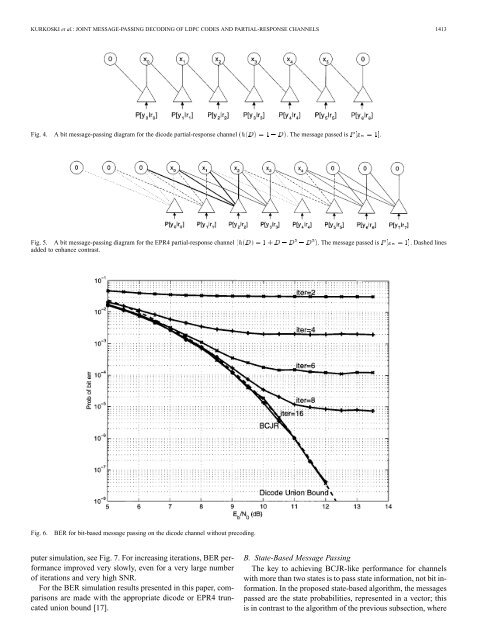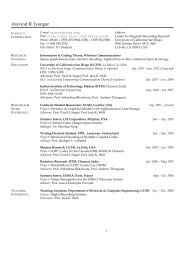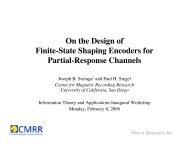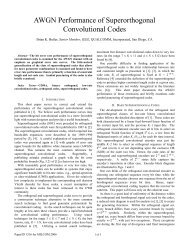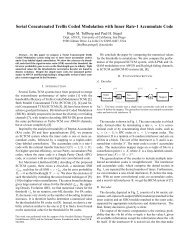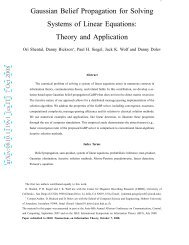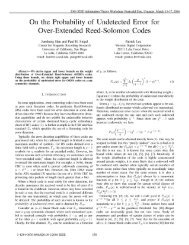Joint message-passing decoding of LDPC codes and ... - CiteSeerX
Joint message-passing decoding of LDPC codes and ... - CiteSeerX
Joint message-passing decoding of LDPC codes and ... - CiteSeerX
Create successful ePaper yourself
Turn your PDF publications into a flip-book with our unique Google optimized e-Paper software.
KURKOSKI et al.: JOINT MESSAGE-PASSING DECODING OF <strong>LDPC</strong> CODES AND PARTIAL-RESPONSE CHANNELS 1413<br />
Fig. 4. A bit <strong>message</strong>-<strong>passing</strong> diagram for the dicode partial-response channel (h(D) =10 D). The <strong>message</strong> passed is P [x =1].<br />
Fig. 5. A bit <strong>message</strong>-<strong>passing</strong> diagram for the EPR4 partial-response channel (h(D) =1+D 0 D 0 D ). The <strong>message</strong> passed is P [x =1]. Dashed lines<br />
added to enhance contrast.<br />
Fig. 6.<br />
BER for bit-based <strong>message</strong> <strong>passing</strong> on the dicode channel without precoding.<br />
puter simulation, see Fig. 7. For increasing iterations, BER performance<br />
improved very slowly, even for a very large number<br />
<strong>of</strong> iterations <strong>and</strong> very high SNR.<br />
For the BER simulation results presented in this paper, comparisons<br />
are made with the appropriate dicode or EPR4 truncated<br />
union bound [17].<br />
B. State-Based Message Passing<br />
The key to achieving BCJR-like performance for channels<br />
with more than two states is to pass state information, not bit information.<br />
In the proposed state-based algorithm, the <strong>message</strong>s<br />
passed are the state probabilities, represented in a vector; this<br />
is in contrast to the algorithm <strong>of</strong> the previous subsection, where


